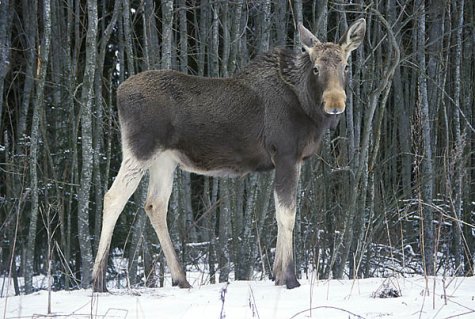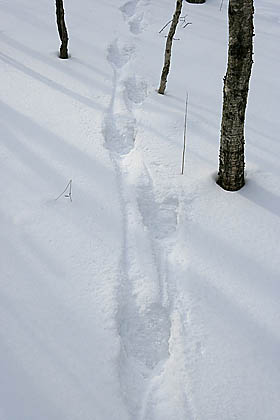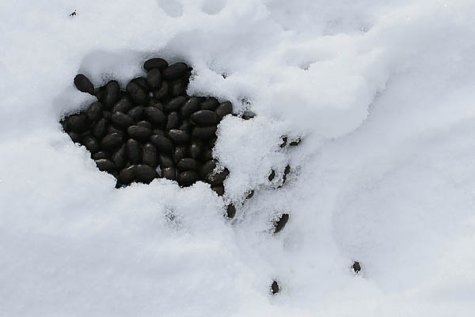About the winter life of elks
| Elk; moose |
Põder
|
Alces alces |
What traces do they leave in the forest in winter? Elks have grown a coat with longer hairs for the winter, and so they can sleep even in a snowdrift. When they rise, they simply shake off the water from the melted snow – dirtying the clean white snow with yellow splashes. Dirt and sweat collect in the fur of the large animal, and there aren’t many means for personal hygiene in winter. But elks will not sleep anywhere, they choose places with a good overview of the surroundings and there is a very good reason for this. When asleep, the mighty “defence tools” of the elk, the forefeet, are kept tucked in under the belly, and so it is defenceless against a surprise attack from an enemy.
In the second half of winter, young pine and spruce stands are often harmed, which of course angers forest owners. Eating birches is a sign of hunger.











